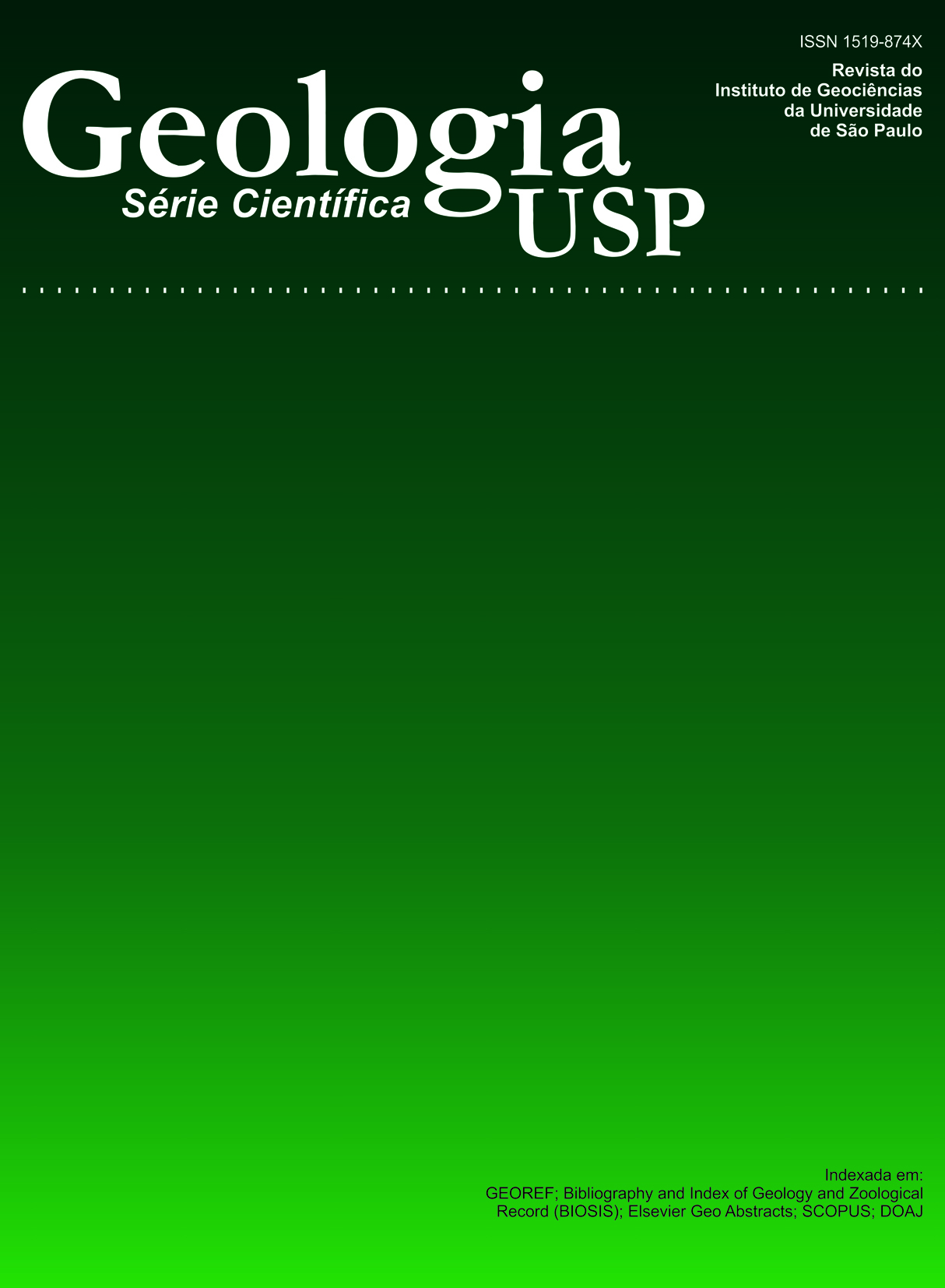Gamma-spectrometric Surveys in Differentiated Granites. I: a Review of the Method, and of the Geochemical Behavior of K, Th and U
DOI:
https://doi.org/10.5327/Z1519-874X2009000100003Keywords:
Cunhaporanga Granitic Complex, Evolved granites, Gamma-spectrometric terrestrial survey, U-Th minerals in granites, Behaviour of K-Th-U during weatheringAbstract
This contribution is part of a research project on the Neoproterozoic Cunhaporanga Granitic Complex (CGC), cropping out in the Ponta Grossa Arch (Paraná state, SE Brazil). An initial study used the gamma-spectrometric data of the Serra do Mar Sul Aerogeophysical Project, performed during the 70s for CPRM. Later, terrestrial gamma-spectrometric surveys focused on the study of the differentiated Joaquim Murtinho Granite (JMG) in the NW corner of CGC, and the Serra do Carambeí Granite, to the SW. In this paper, the results obtained for JMG are presented in two parts. The first deals with methodology and the presentation of several gamma-spectrometric color-scale maps, indicating that results obtained in granites depend strongly on a climatic factor, given the mobility of K during weathering in subtropical climates with strong rainfalls, also favoring a greater mobility of U. Minerals that are U and Th hosts, documented in granites, are reviewed, together with the weathering processes that control the mobility of K, U and Th in soils. Strong K signals in granitic areas submitted to these climates document the presence of fresh rock and/or effects of hydrothermal alteration, while weak or nil signals are evidence of strong leaching of K during weathering. U and Th will be retained in the residual soils, in part leading to their selective enrichment, also coupled with soil migration to lower topographic levels by colluvial transport. The larger solubility of U (as uranyl ion) allows its liberation under oxidizing conditions, and its migration, limited by the possibility of absorption in newly formed mineral and organic soil phases. Th should be retained almost totally in resistant phases and, when liberated in solution, will mostly be fixed in organic and inorganic soil substancesDownloads
Download data is not yet available.
Downloads
Published
2009-01-01
Issue
Section
Articles
License
Authors who publish in this journal shall comply with the following terms:
- Authors keep their copyright and grant to Geologia USP: Série Científica the right of first publication, with the paper under the Creative Commons BY-NC-SA license (summary of the license: https://creativecommons.org/licenses/by-nc-sa/4.0 | full text of the license: https://creativecommons.org/licenses/by-nc-sa/4.0/legalcode) that allows the non-commercial sharing of the paper and granting the proper copyrights of the first publication in this journal.
- Authors are authorized to take additional contracts separately, for non-exclusive distribution of the version of the paper published in this journal (publish in institutional repository or as a book chapter), granting the proper copyrights of first publication in this journal.
- Authors are allowed and encouraged to publish and distribute their paper online (in institutional repositories or their personal page) at any point before or during the editorial process, since this can generate productive changes as well as increase the impact and citation of the published paper (See The effect of Open Access and downloads on citation impact).
How to Cite
Ulbrich, H. H. G. J., Ulbrich, M. N. C., Ferreira, F. J. F., Alves, L. S., Guimarães, G. B., & Fruchting, A. (2009). Gamma-spectrometric Surveys in Differentiated Granites. I: a Review of the Method, and of the Geochemical Behavior of K, Th and U . Geologia USP. Série Científica, 9(1), 33-53. https://doi.org/10.5327/Z1519-874X2009000100003





